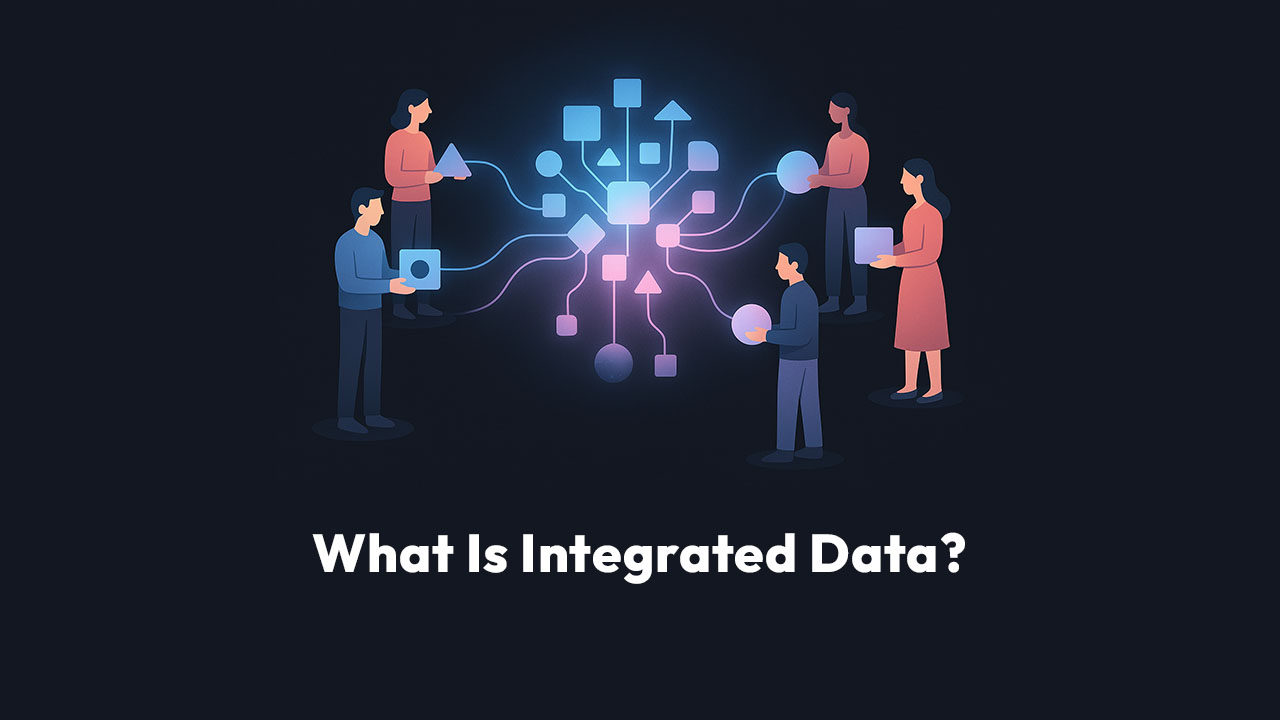The Foundation of Smarter Business Decisions
In the simplest terms, integrated data is the process of combining information from multiple sources into one unified, consistent view that anyone in your organization can trust and act on. It’s the backbone of modern business operations—connecting scattered systems, aligning teams, and turning raw numbers into real insight.
If you’ve ever wondered why reports from Sales, Marketing, and Finance don’t match, or why decision-making feels slow despite having “plenty of data,” you’re already experiencing the problem integrated data solves.
Why Integrated Data Matters More Than Ever
Here’s the hard truth: most organizations don’t have a data shortage—they have a data chaos problem.
You’ve got CRMs, ERPs, project management tools, customer support dashboards, and analytics platforms. Each stores valuable information, but in isolation, they’re just puzzle pieces. Integrated data is what completes the picture.
In today’s digital business landscape, where agility and accuracy drive competitive advantage, data integration ensures every decision is based on the same version of the truth. It allows operations leaders to connect strategy with execution, transforming how teams collaborate and measure success.
What Is Integrated Data?
Integrated data refers to the process of collecting, cleansing, transforming, and unifying data from different sources into a centralized, consistent format for analysis and decision-making.
It’s not just about merging spreadsheets or syncing databases. It’s about creating a single source of truth that reflects real-time performance across departments. Integrated data systems automatically pull information from diverse applications—CRM, accounting software, marketing platforms, logistics databases—and consolidate it into one cohesive model.
Think of it as an ecosystem. Instead of ten separate ponds, you have one connected lake. Each inflow (your data source) contributes to the same body of water, ensuring every team works with the same, accurate reflection of the business.
What Is Data Integration and How Does It Work?
Data integration is the technical process behind integrated data—it’s how disparate data sets are collected, transformed, and combined into a unified system.
Integration typically happens in three stages:
- Extract: Data is pulled from multiple sources (databases, APIs, flat files, cloud apps).
- Transform: The data is standardized—units, formats, and fields are aligned.
- Load: Clean data is stored in a centralized system, such as a data warehouse, data lake, or data lakehouse.
This process, known as ETL (Extract, Transform, Load), ensures that every report, dashboard, or model reflects the same consistent and up-to-date information.
Example
Imagine a retail chain with 200 stores across regions. Without integration, sales data might live in POS systems, inventory in ERP software, and customer feedback in a survey platform. Data integration merges these streams—so when corporate analyzes “sales by region,” the insights already account for stock levels and customer sentiment.
How Does Integrated Data Improve Data Integrity?
Data integrity refers to the accuracy, consistency, and reliability of data throughout its lifecycle. Integrated data strengthens integrity by eliminating silos, automating updates, and enforcing consistent validation rules.
When data flows freely between systems, errors like duplicates, outdated records, and mismatched entries decrease dramatically. Integration ensures that when one department updates information—say, a customer address—it updates everywhere else automatically.
Think of integrity as trust. Without it, even the most advanced analytics are useless. In fact, studies show that over 40% of business leaders don’t trust their company’s data—often due to inconsistencies between systems. Integrated data rebuilds that trust by aligning every data point across the organization.
What Are the Benefits of Integrated Data?
Integrated data isn’t just a technical upgrade—it’s a strategic enabler. Here’s what business operations leaders gain:
- Faster Decision-Making – Access accurate, real-time insights across departments.
- Improved Efficiency – Reduce redundant data entry and manual reconciliation.
- Enhanced Collaboration – Create alignment between marketing, sales, operations, and finance.
- Better Forecasting – Use consistent data models to predict outcomes and adjust strategy proactively.
- Regulatory Confidence – Maintain compliance with data governance and audit standards.
- Customer Understanding – Connect behavioral, transactional, and service data to build a full customer profile.
💡 A surprising fact: The average company uses over 130 different SaaS tools. Without integration, that’s 130 disconnected conversations happening inside your business.
Common Challenges in Data Integration (and How to Overcome Them)
No transformation comes without friction. Here are the most common obstacles—and how operations leaders can navigate them:
How Does Integrated Data Support Business Intelligence (BI)?
Integrated data fuels business intelligence by ensuring dashboards, KPIs, and analytics tools pull from consistent and accurate sources.
When BI systems rely on fragmented or outdated data, reports mislead more than they inform. Integration provides the continuity and validation needed for confidence in every metric. The result? Dashboards that tell one version of the truth instead of five conflicting ones.
Example
A manufacturing firm once spent weeks reconciling monthly production and logistics reports. After integrating their ERP, CRM, and supply chain systems, they reduced that process to hours—freeing managers to analyze trends instead of chasing spreadsheets.
What Is the Role of Integrated Data in a Data Lakehouse?
In a data lakehouse, integrated data acts as the foundation—blending raw, unstructured data (from a data lake) with structured, query-ready data (from a data warehouse).
Traditional architectures forced businesses to choose between flexibility (data lakes) and structure (warehouses). The lakehouse model merges both—allowing operations leaders to access all enterprise data from a single, governed environment.
Example
Companies using platforms like Dremio or Databricks leverage integrated data pipelines to:
- Eliminate duplication between storage layers
- Run analytics directly on fresh data
- Improve performance while lowering costs
The result is faster reporting, better governance, and greater data agility.
How Does Integrated Data Improve Security?
Integrated data enhances security by centralizing governance and applying consistent policies for access, encryption, and compliance across all systems.
Instead of managing 10 different user permission models, integration allows one framework to protect all connected systems. Automated monitoring can detect anomalies faster, and compliance checks become simpler because every dataset follows the same standards.
When designing an integration strategy, always include:
- Role-based access controls (RBAC)
- End-to-end encryption
- Automated compliance reporting
That’s how you maintain control without slowing down innovation.
FAQs
What’s the difference between integrated data and data integration?
- Data integration is the process.
- Integrated data is the outcome—a consistent, unified dataset ready for analysis.
How does integrated data ensure data integrity?
By aligning all systems to a shared validation model and automatically reconciling updates across platforms, reducing human error and duplication.
What tools can help manage integrated data?
ETL tools (like Fivetran or Talend), iPaaS solutions (like MuleSoft or Boomi), and modern lakehouse platforms (like Dremio or Snowflake) are common choices.
Is integrated data only for large enterprises?
Not at all. Even small businesses benefit from having clean, connected data—especially as SaaS adoption grows. Integration simply scales with complexity.
The Bigger Picture: From Data Overload to Data Intelligence
You might be thinking, “We already have plenty of data.”
But here’s the reality: data alone doesn’t create value—connected data does.
Integrated data transforms business operations from reactive to proactive. It eliminates guesswork, empowers every team with shared insight, and creates the clarity needed for confident decisions.
Companies that master integration don’t just move faster—they see further. They know what’s happening now, why it’s happening, and what’s likely to happen next.
And that’s the difference between being data-rich and insight-driven.
Conclusion
Integrated data is not a luxury—it’s a leadership necessity.
For business operations leaders, it’s the bridge between chaos and clarity, between having data and actually using it.
If your organization is still battling disconnected systems, fragmented reports, or inconsistent metrics, it’s time to take the next step. Start small, unify your core data, and scale from there.
Because in business, the companies that connect their data are the ones that connect the dots—and win.








.png)